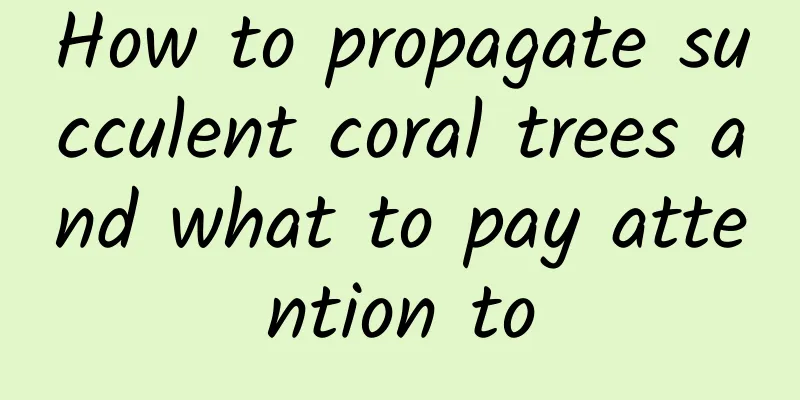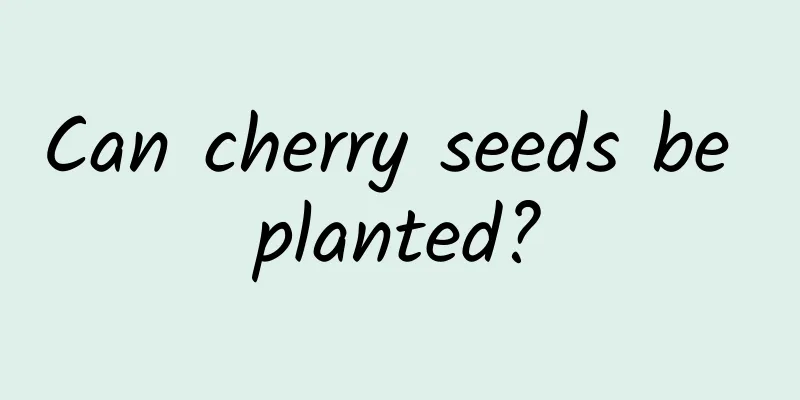How to take cuttings of Gloxinia leaves

|
Gloxinia is a flower that many people like to grow. It has beautiful flowers and is easy to reproduce. In addition, the survival rate of Gloxinia cutting propagation is very high. Here I will introduce to you the method of leaf cuttings of Gloxinia. 1. Cutting time There is no specific season or time requirement for propagating Gloxinia by leaf cuttings. We just need to control the temperature at around 25° and choose the season when Gloxinia grows more vigorously. Generally, the best time for leaf cuttings is from April to May, late spring to early summer. During this period, the vitality of African violets is very strong, the rooting speed is relatively fast, and the vitality of the plant itself is strong, so the leaves that are pinched off are more likely to take root and survive. 2. Choose the blade Select a thick and healthy leaf on the Gloxinia plant, making sure it is thick, strong and free of diseases and insect pests, and pick it off together with the petiole. When picking leaves, be sure to pick them close to the base of the petiole to avoid breaking the petiole in the middle. Wash the picked leaves and cut them in half with scissors . The leaves of Gloxinia are relatively large, and cutting them off will help the leaf cuttings survive. 3. Cutting medium The cutting medium must be loose and breathable. For example, fine yellow sand, perlite and vermiculite are more suitable as cutting medium. Before grafting Gloxinia, you can open small holes at the bottom and top of the container to enhance air permeability. Complete sealing can easily cause the leaves to mold and rot. 4. Cutting method Insert the leaves obliquely into the substrate from the petiole, with a depth of 1/3 of the leaves, and fix the substrate leaves to prevent the leaves from falling. 5. Post-maintenance After the cuttings are completed, directly cover the cutting Gloxinia fresh-keeping box. Remember that there should be air holes on the top and bottom of the box, and place it in a ventilated and cool place for maintenance, avoiding direct sunlight and allowing a small amount of scattered light to ensure the survival of the leaves. During the rooting process of the leaves, the soil of Gloxinia must be kept moist. The humidity should not be too high, but the soil should not be allowed to dry out. You can directly place the cuttings of Gloxinia in a tray filled with water to allow it to absorb moisture. After the substrate dries, you can water it thoroughly to keep the soil moist. 6. Transplanting If you propagate Gloxinia from leaves by cuttings, they will take root normally in about 20 days and the root system will thrive. During these 20 days, large white roots will grow from the leaves of Gloxinia and the rudiments of a bulb will already appear. In this case, you can transplant it with confidence. That’s it |
>>: What does mulberry leaf look like?
Recommend
The growing conditions for tulips are suitable for the temperature of the growing environment.
Tulip growing conditions Tulips prefer sunny and ...
How many times a year can tomatoes be planted? Can they be planted all year round?
How many seasons can tomatoes be grown in a year?...
Taboos of drinking dandelion water, the role of dandelion
1. Taboos of drinking soaked water 1. Avoid low b...
Cultivation methods and precautions of Jin Sulan
How to cultivate Jin Sulan soil Chimonanthus pref...
How many days does it take for the germination of the auricularia auricula? Seed germination temperature and germination method
How long does it take for wood ear vegetable to g...
Onion seedling planting method and time planting method and steps introduction (full)
Suitable time for planting onion seedlings Onion ...
Cultivation methods and precautions of Ageratum
How to grow Ageratum Pot soil selection To grow a...
How to fertilize Basoglossum
time The fertilizer required for the bracteolate ...
What flowers are suitable for growing in Tongren? What are the city flowers and trees?
1. Climate characteristics of Tongren Tongren has...
Southern ginger planting time and method
Southern ginger planting time When planting south...
Will the cowgrass cover the entire tank? Does it have a long lifespan?
1. How long will the cowgrass live? This type of ...
What fertilizer is best for growing sweet potatoes? (What fertilizer is best for growing sweet potatoes to produce more fruits and higher yields)
Sweet potatoes, as the most popular "fourth ...
What to do if the leaves of spiderwort become dry
Too much watering Net-veined grass is a plant tha...
Tutorial on how to saw off a fortune tree
1. Wound management If there is a problem with th...
How to grow lilies? Can you grow lilies at home?
1. How to plant 1. Time selection: Before plantin...









